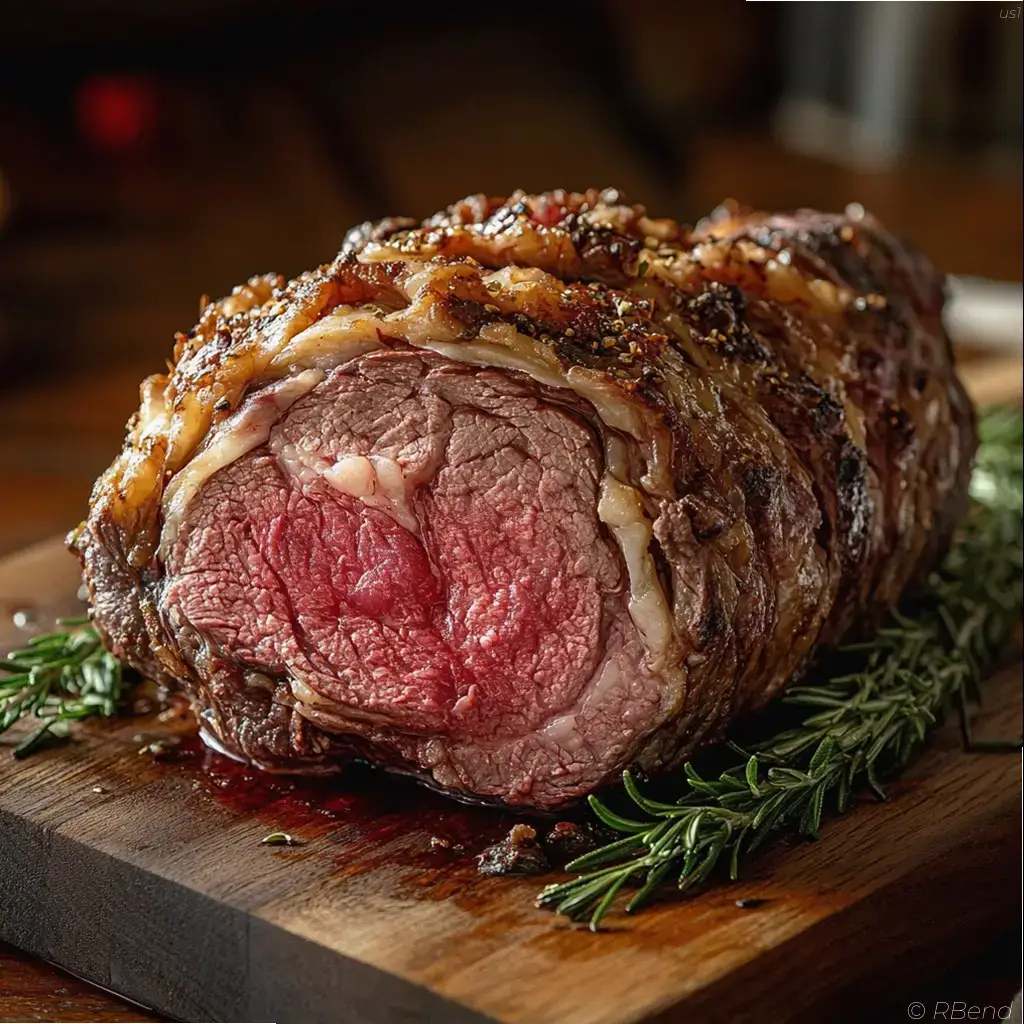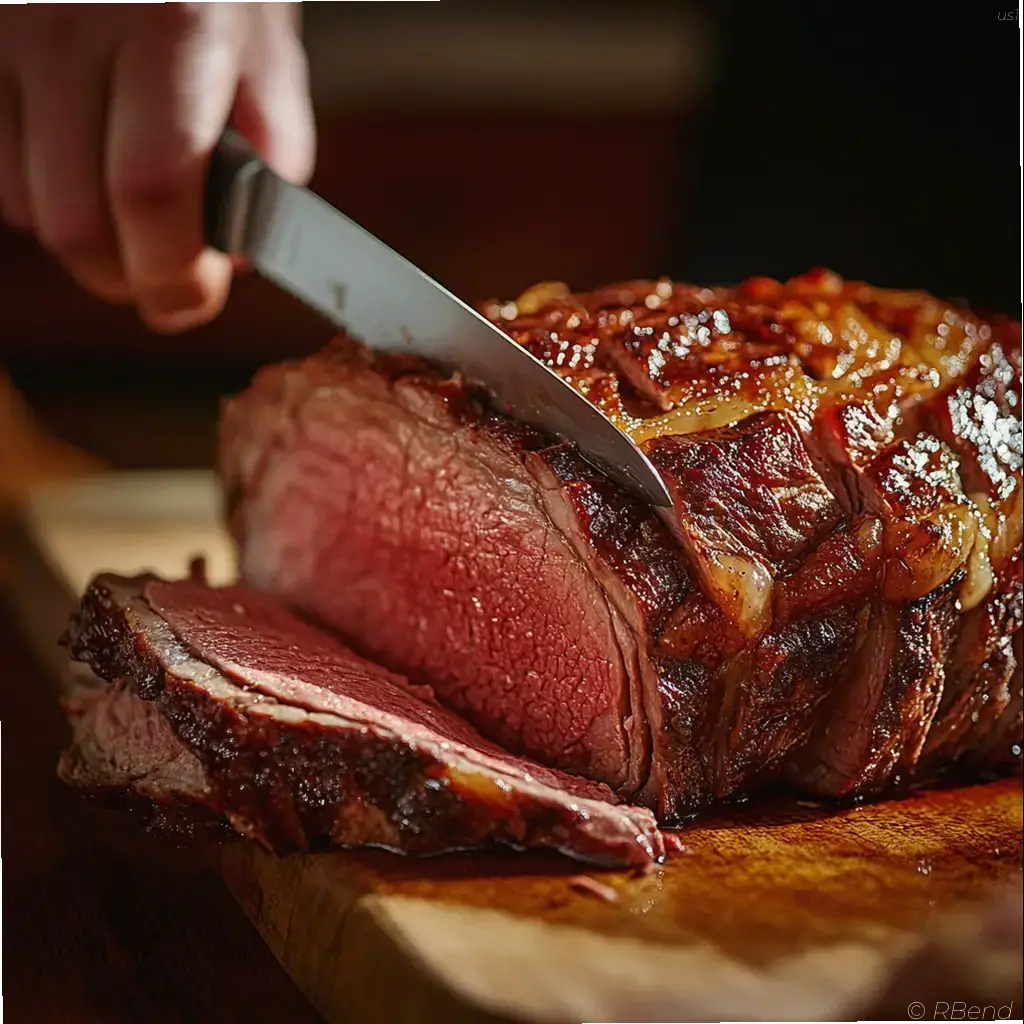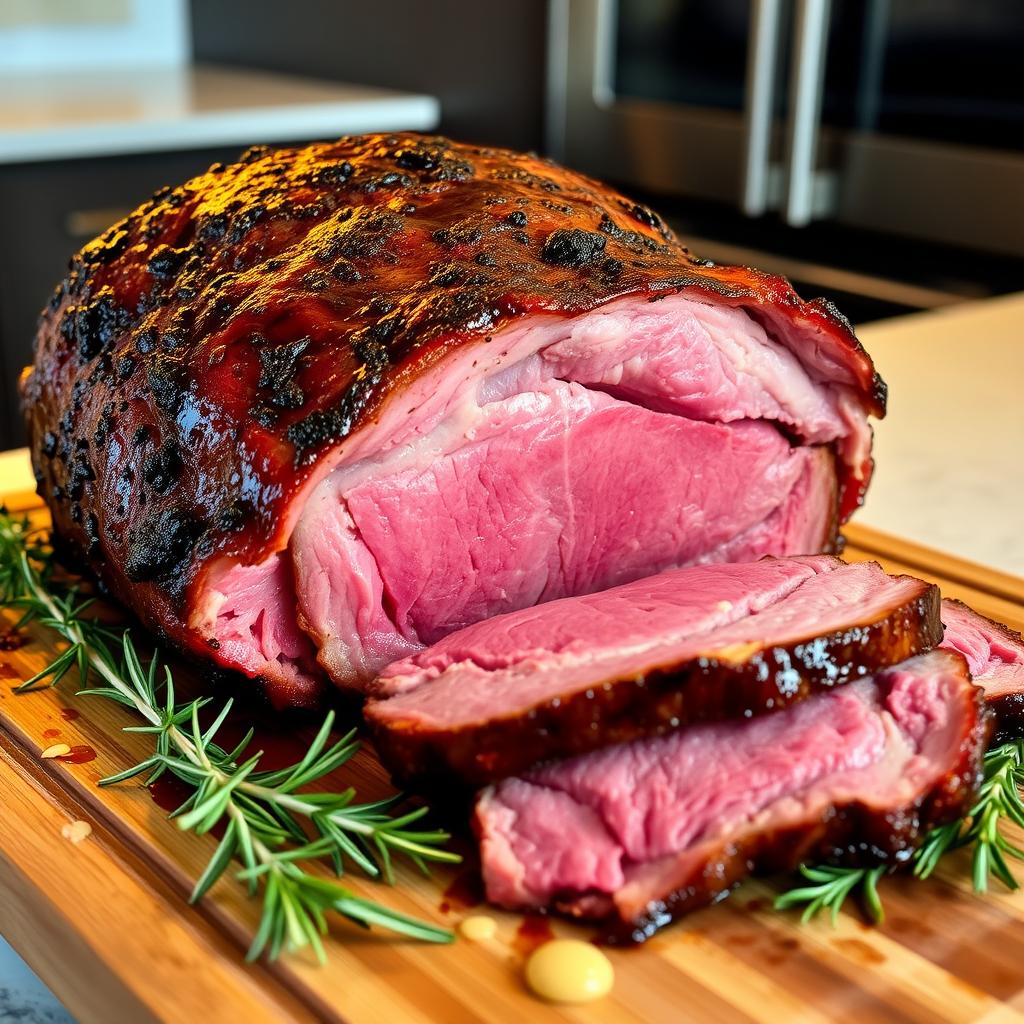Cooking a prime rib roast can be intimidating, but it’s actually quite simple. With the right guidance, you can create a tender and flavorful dish that’s sure to impress your guests.
A prime rib roast is considered the king of beef cuts, known for its tenderness and rich flavor. To achieve perfection, you’ll need to select the right piece of meat and cook it to the ideal temperature. Don’t worry, we’ll walk you through each step of the process.
In this comprehensive guide, you’ll learn how to cook a prime rib to perfection, from preparation to serving. Whether you’re a seasoned chef or a beginner, this recipe will help you create a memorable meal.
Key Takeaways
- Learn how to select the right piece of meat for a prime rib roast
- Understand the ideal cooking temperature and resting time
- Discover the secrets to a tender and flavorful prime rib
- Get step-by-step guidance on preparing and serving a prime rib roast
- Create a memorable meal that’s sure to impress your guests
What Makes Prime Rib Special
When it comes to impressive roasts, prime rib stands out for its exceptional marbling and flavor. This cut of beef is truly special, and its unique characteristics make it a favorite among chefs and home cooks alike.
The King of Roasts
Prime rib, also known as standing rib roast, is considered the king of roasts due to its perfect balance of tender meat and flavorful fat. The primal rib section of the cow, from which it is cut, is known for its generous marbling, creating an incredibly rich flavor profile. This marbling is what sets prime rib apart, making it a succulent and savory experience for any occasion.
Bone-in vs. Boneless Prime Rib
The debate between bone-in and boneless prime rib is ongoing among cooks. Bone-in prime rib roasts are typically more flavorful and cook better than their boneless counterparts. The bones act as natural insulators during cooking, helping the meat cook more evenly. On the other hand, boneless prime rib provides easier carving and serving, making it a practical choice for less experienced cooks.

A compromise between the two is to ask your butcher for a bone-in roast with the bones cut away but tied back to the meat. This way, you get the flavor benefits during cooking but can easily remove the bones before serving.
| Characteristics | Bone-in Prime Rib | Boneless Prime Rib |
|---|---|---|
| Flavor | More flavorful due to bones | Less flavorful without bones |
| Cooking Evenness | Bones help cook more evenly | May cook less evenly without bones |
| Carving and Serving | More challenging to carve | Easier to carve and serve |
Selecting the Perfect Prime Rib
Selecting the perfect prime rib involves involves understanding the different different grades of beef and their characteristics. The right choice will ensure a tender and flavorful roast. You should consider several factors when buying prime rib, roast, including the grade of beef, the size of the roast, and whether you prefer fresh or dry-aged meat.
Grades of BeefGrades of BeefGrades of Beef
When selecting the perfect prime rib, understanding beef grades is essential. The USDA grading system helps you make an informed decision. USDA Prime offers the most marbling and tenderness, making it a excellent choice for special occasions. USDA Choice is another popular option, providing excellent flavor at a more reasonable price point than Prime grade beef. For the best value, many home cooks opt for USDA Choice grade.
Size ConsiderationsSize Considerations
Size considerations are crucial when purchasing your rib roast. A good rule of thumb is is to plan for about one pound of prime rib per person for bone-in roasts. If you’re serving multiple side dishes, you can reduce that to half to three-quarters of a pound per person. A full prime rib roast, which typically includes seven ribs, can weigh 15-18 pounds and serve 14-20 people. You can also opt for a half roast or a smaller cut of 2-3 ribs for a smaller gathering.
Fresh vs. Dry-Aged Prime RibFresh vs. Dry-Aged Prime Rib
Fresh meat Fresh prime rib is readily available at most butcher shops and high-end grocery stores, offering excellent flavor and texture. On the other hand, dry-aged prime rib provides intensified flavor and tend tenderness due to the aging process. While dry-aged prime rib is more expensive, many beef enthusiasts find the enhanced nutty, complex flavor profile worth the premium. Store your prime rib properly in the refrigerator until you’re ready to prepare it.
Essential Prime Rib Recipe Ingredients
A great prime rib recipe begins with selecting the right seasonings. The beauty of prime rib lies in its natural flavor, which means you don’t need complicated ingredients to create a memorable meal.
Simple Seasoning Approach
For a classic simple seasoning approach, all you need is kosher salt and freshly ground black pepper applied generously to all sides of the roast at least 45 minutes before cooking. Salt not only seasons the meat but also helps create a beautiful crust during roasting and draws out some moisture from the surface, allowing for better browning.
Herb and Garlic Rub
For those wanting more flavor complexity, a herb and garlic rub elevates your prime rib recipe with aromatic ingredients that complement the rich beef flavor. A traditional herb rub combines fresh rosemary, thyme, minced garlic (about 4-6 cloves per roast), olive oil (about 1/4 cup), salt, and pepper to create a paste that adheres well to the meat.
Some chefs add Dijon mustard (2-3 tablespoons) to their herb rub, which helps the seasonings stick to the roast and adds a subtle tangy flavor that complements the richness of the beef. Regardless of which seasoning approach you choose, remember that prime rib deserves high-quality ingredients.
Preparing Your Prime Rib
A perfectly cooked prime rib begins with careful preparation and attention to detail. To ensure your roast turns out perfectly, follow these crucial steps.
Bringing to Room Temperature
Remove your prime rib roast from the refrigerator at least one hour before cooking to allow it to come to room temperature. This step is crucial for even cooking from the center to the edge.
Cover it lightly with plastic wrap while it rests. For larger roasts, you can extend this time to up to two hours.
Seasoning Techniques
You can either apply salt to the roast the night before cooking, known as dry brining, or season just before cooking for a more concentrated exterior flavor. Press your seasonings firmly onto all surfaces of the meat to ensure they adhere well during cooking.
Preparing Your Roasting Pan
Use a heavy-duty roasting pan with a rack that elevates the prime rib, allowing hot air to circulate around the roast. For bone-in roasts, place them bone-side down in the pan, as the bones create a natural rack. For boneless roasts, place the meat fat-side up on the rack.
Consider adding aromatic vegetables like onions, carrots, and celery to the pan to flavor the drippings for au jus or gravy later.
The Perfect Prime Rib Cooking Method
To cook a prime rib to perfection, you need to balance a a beautiful brown crust crust with a juicy, juicy interior. The The perfect prime rib cooking method achieves this balance while maintaining your desired doneness level level.
Reverse Sear Technique Technique
The reverse sear technique has gained popularity among chefs and home cooks alike.. It involves slow roasting at a low temperature temperature followed by a high-heat finish.
To execute a reverse sear, preheat your oven oven to a low temperature (200-250°F°F). Roast until the meat is about 10-15 degrees below your target temperature, then rest the roast while you increase the oven temperature to 500°F. Return the meat to the oven for a final 5-10 minutes to develop a crust.
Low and Slow Approach
The traditional low and slow slow approach involves cooking at a consistent moderate temperature (325-350°F) throughout the cooking time time. This method typically requires about 15-17 minutes per pound for medium-rare doneness.
Some recipes suggest starting with a high heat (preheat oven to 500°F) for the first 15 minutes to develop a crust, then reducing to 325°F for the remainder of the cooking time.
Temperature Guidelines for Different Doneness Levels
Temperature guidelines are crucial for achieving achieving different doneness levels levels. For rare, aim for 120-125°F; for medium-rare, 130-135°F; for medium, 140-145°F; and for medium-well, 150-155°F.
Remember, your roast will continue cooking during the rest period, rising approximately 5-10 degrees. So, remove it from the oven oven when it’s 5-10 degrees below your target temperature.
Using a Meat Thermometer
A meat thermometer is essential for cooking prime rib to perfection… Invest in a good-quality instant-read thermometer or a probe thermometer that can stay in the meat while cooking.
Insert the thermometer into the the thickest part of the roast, avoiding fat pockets or bones that can give false readings.

Resting and Serving Your Prime Rib
The resting period is is a critical phase in achieving a tender and tender and juicy prime rib rib. After removing the prime prime rib from the the oven, it’s essential to tent the entire roast with aluminum foil and let it rest for at least 30 minutes. This allows the juices to to redistribute throughout the meat meat, ensuring a more tender and flavorful eating experience.
The Importance of Resting
Resting your prime rib is crucial because it allows the juices to seal back into the meat meat. If you cut the meat too soon, the the juices will run out, and leaving it dry and chewy. For larger roasts (over 10 pounds), it’s extend the resting time to 30-45 minutes, tenting loosely with aluminum foil to keep it warm without causing steam that could soften your perfect crust.

Carving Techniques
When it’s time to carve your rested prime rib, place it on a a cutting board with a channel to catch the juices. Remove any kitchen twine, and if you have a a bone-in roast, decide whether to remove the bones before slicing. Carve your prime rib against the grain in slices of your desired thickness – thinner slices (1/4 to 1/2 inch) for for elegant dinner presentations, or thicker slices (3/4 to 1 inch) for a more substantial serving.
Serving Suggestions and Accompaniments
Classic serving suggestions include include offering horseradish sauce, au jus made from the pan drippings, and Yorkshire pudding for an authentic prime rib dinner experience. Popular side dishes that complement prime rib include roasted potatoes, creamed spinach, roasted asparagus, and a simple green salad to balance the richness of the meat meat. For a complete holiday meal, consider serving your prime rib with twice-baked potatoes, honey-glazed carrots, and a a bold red wine like Cabernet Sauvignon or Malbec to complement the beef’s rich flavor.
Conclusion
Cooking the perfect perfect prime rib is rewarding experience that combines technique technique, patience,, and attention to detail.
You have now reached the pinnacle of cooking a prime rib roast. With the techniques outlined in this guide, you can achieve a perfectly cooked, tender, and juicy prime rib that will be the centerpiece of any special occasion or dinner.
To recap,mastering the perfect prime rib recipeinvolves several key steps. First,selecting the right standing rib roastis crucial. You must consider factors like the grade of beef, the size of the roast, and whether it’s fresh or dry-aged.


